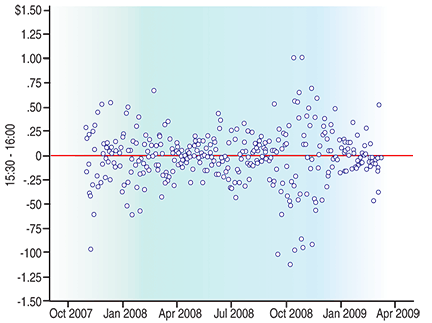TRADING SYSTEMS
Piggybacking On Success
Bear Market Survival Kit
Any system can produce stellar results when it suggests taking a position in the same direction of a trending market. But what do you do when the market quickly changes direction?
Few if any trading systems work across all economic environments. As you know, any system can produce superlative results when it suggests taking a position in the same direction of a trending market. However, the performance of these same systems is rendered ineffective as soon as the market changes direction. This article shows how you can capture profits when taking a long position in a downtrending market. Going back to the 340 days of the previous bear market, I ran the numbers to see if a late upside rally contributed to additional buying or if it reinforced more selling when we are in such a nasty trading environment.
Going against the grain
When we are in the grips of a bear market, should we try to magnify profits by joining a late price run once it is in motion? Viewed another way, when the market is experiencing a strong rally from 3:00 to 3:30 pm, should we take a long position at 3:30 and hold this position until the ringing of the closing bell (4:00 pm)?
Why would anyone take a position in such a perilous environment? Besides the precipitous downturn, volatility is at its highest, which makes this a dark and dangerous setting. Despite the turbulence, an aggressive investor who knows how an instrument trades in these remaining minutes can profit in this fertile trading environment.

Figure 1: scatter chart for the 15:30–16:00 trading session. The extreme scores are abundant (for every 12.5 trading days, one day had a result of $0.50, more or less. Note the scores clustering closely together at the middle of the chart. This calmness was instrumental for the formation of the start of a long bullish run that began on March 10, 2009.